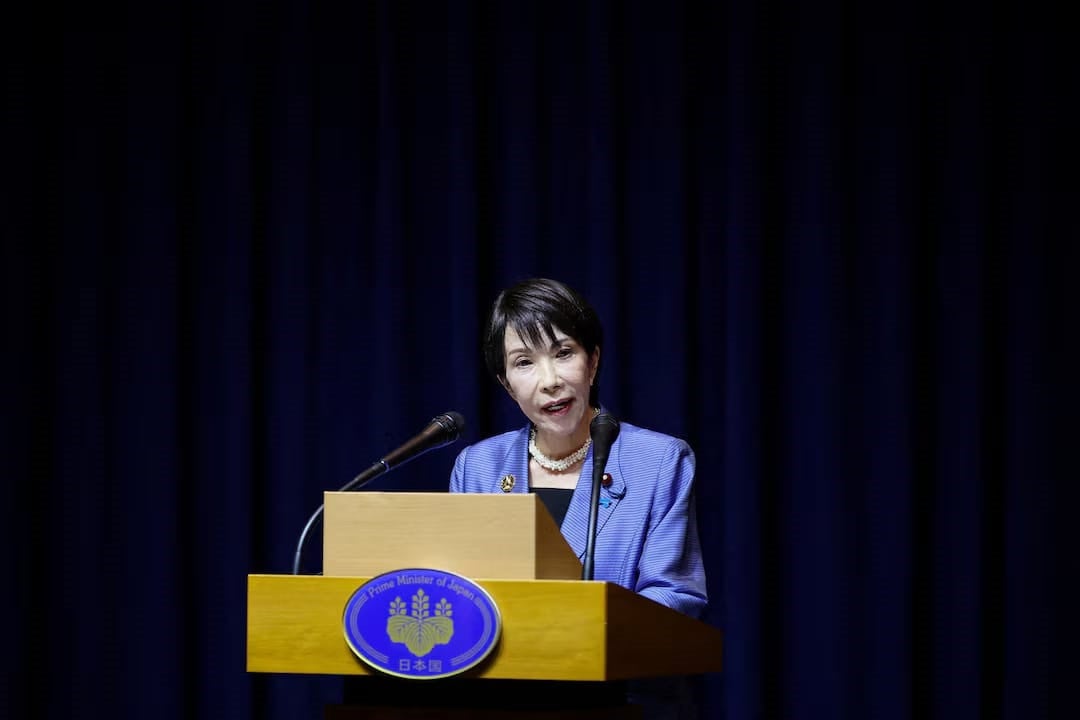PUBLISHED
November 23, 2025
From the moment Sanae Takaichi stood in parliament and declared that a possible Chinese attack on Taiwan could be a “survival-threatening situation” for Japan, the tectonic plates of East Asian security shifted. Her words this November did more than stir a diplomatic tempest: they signalled a decisive step away from Japan’s longstanding post-war pacifism and into a far more volatile era of militarised logic.
The phrase “survival-threatening situation” refers to the controversial 2015 security legislation under Shinzo Abe that permitted the Japan Self‑Defense Forces (JSDF) to act when Japan’s survival was directly endangered—even if Japan itself was not under attack. Takaichi, widely regarded as Abe’s political heir, now seeks to wrench that framework into a domain far riskier than its original intent.
In the parliamentary session on November 7, Takaichi tied Taiwan explicitly into that formula: if China moved by warships or other force to bring Taiwan under its control, that would, in her view, meet the threshold for Japan’s intervention. Japan’s Security Council would thereby be triggered. Until then, Tokyo had maintained the diplomatic stance of “strategic ambiguity.” But instead of nuance, a red line was drawn.

Beijing’s response was immediate—and fierce. China’s foreign ministry called the remarks “crude interference” in its internal affairs, asked Japan to retract the comments or “bear all consequences,” and even issued a travel caution for Chinese citizens heading to Japan. Meanwhile, the Japanese public is sharply divided. According to a recent poll by Kyodo News, 48.8% said Japan should exercise collective self-defense in the event of a China–Taiwan conflict, while 44.2% opposed such action. Notably, 60.4% supported Takaichi’s drive to raise Japan’s defence spending to 2% of GDP ahead of schedule.
The ripple effects extend far beyond Tokyo and Beijing. Already, the Senkaku Islands (known in China as the Diaoyu) are once again potential flash-points. On November 27, a Chinese Coast Guard formation sailed through the waters near the islands, citing a “rights enforcement patrol.” The timing was no accident: the patrol followed Takaichi’s remarks by days and underlines Beijing’s willingness to translate diplomatic anger into maritime pressure.
What is unfolding is a brave-yet-reckless recalibration of Japan’s role. On one hand, Takaichi is tackling the undeniable fact that Japan’s western flank now faces a giant neighbour gathering forces, asserting its claims, and threatening to change the status quo. Taiwan lies just 110 km from Japan’s Yonaguni island. A Chinese move across the Taiwan Strait would have direct implications for Japanese sea lines of communication and defence. On the other hand, by linking Japan’s survival to Taiwan’s fate, she is converting long-dormant capabilities into forward-leaning military logic, well beyond the classic self-defence posture.

It is true that under her leadership Japan is moving on several vectors immediately. Within weeks of taking office she has floated raising defence spending, relaxing arms an-export controls, and revisiting Japan’s long-sacrosanct “three non-nuclear principles.” The contours of Japan’s strategic transformation are visible: from self-defence to power projection
There is, however, a danger of mis-calculation. The architecture of Japan–China relations is still underpinned by four political documents and the one-China policy. Takaichi’s invocation of Taiwan as an existential threat, in Beijing’s eyes, tears at those threads. The Xinhua commentary argued that this was not prudent defence policy but “militaristic adventurism” masquerading as legitimacy. “Plainly not a country with close ties to Japan,” the commentary said of Taiwan, and therefore not eligible under Japan’s survival threshold.
Domestically, Japanese society is wrestling with the new narrative. Many recall that when Japan permitted limited collective self-defence in 2015, public protest rose at the idea of rewriting Article 9 which renounces war. A decade later, the argument is no longer about whether Japan can defend itself—it is whether Japan should prepare to intervene aggressively alongside the US or even independently in a Taiwan contingency. The traditional myth of “Japan as pacifist by default” is ing.
Globally, the US is watching nervously. Washington values Tokyo as its most reliable ally in the Pacific, but historically the U.S. has maintained strategic ambiguity over Taiwan. Japan’s embedding of Taiwan into its own survival equation complicates that U.S. position—and may lead to Tokyo being the flash-point for US—China escalation. Beijing certainly interprets it that way: “Japan is taking up the role of dragging the United States into confrontation,” the Xinhua commentary stated.

Should this drift continue, the region faces multiple fault-lines. First, Japan may formalise new policy that treats Taiwanese contingencies as threats to its own survival, with equal standing to attack on Japan’s home islands. Second, Japan may transform its Self-Defence Forces into an expeditionary capability suited for overseas intervention—not only in support of allies, but under Japan’s own mandate. Third, diplomatic and economic fallout with China would accelerate. Already tourism from China to Japan is threatened; trade ties and investment flows could follow.
Yet there remains an alternative route: a recalibration rather than escalation. Domestic push-back and regional concerns may force Tokyo to clarify its position and restrain from pushing the Taiwan threshold too far. The US may pull Tokyo back into alignment on ambiguity. But whether that happens is uncertain—and delayed action risks slipping Japan into a once-avoided diplomacy of force.
The irony is sharp: Japan, whose devastation at Hiroshima and Nagasaki shaped a post-war constitution grounded in pacifism and relief by American defence guarantee, now appears poised to raise its military profile not simply for defence, but for intervention. The shadow of its prior militarism, which invaded — and colonised — other nations, looms large. The question Japan must answer is whether its patriotic defence is a shield or a spear.
In the end, Takaichi’s gambit is a crossing of the Rubicon. By pulling Taiwan inside her “survival-threatening situation” framework, she has torn away the last veil of ambiguity. Japan has claimed the right to act—not in defence of its own soil—but in defence of a regional ally whose fate it now says is its own. That claim may win some admiration in Tokyo; in Beijing it is seen as provocation. And in the wider region it raises a chilling possibility: that the next crisis will not be Taiwan’s alone—but Japan’s too.
If this moment is mishandled, we may witness not just a rhetorical shift, but a strategic pivot—and the region may find itself drawn into a wider conflict far sooner than anyone anticipated. Japan might believe it is merely upgrading its defences; in reality it could be lifting the stage curtain on a return to great-power warfare.
Qamar Bashir is has served as Press Secretary to the President (Rtd), Press Minister, Embassy of Pakistan to France, Press Attaché to Malaysia and MD, SRBC, Michigan

